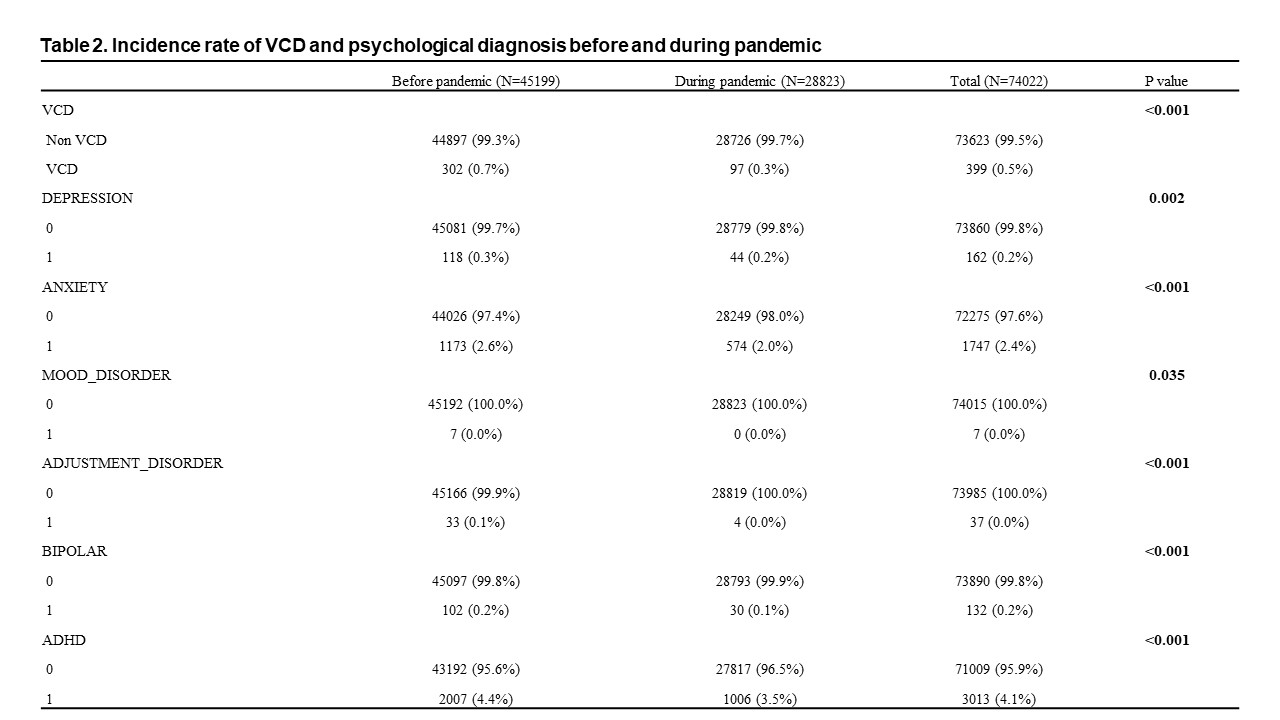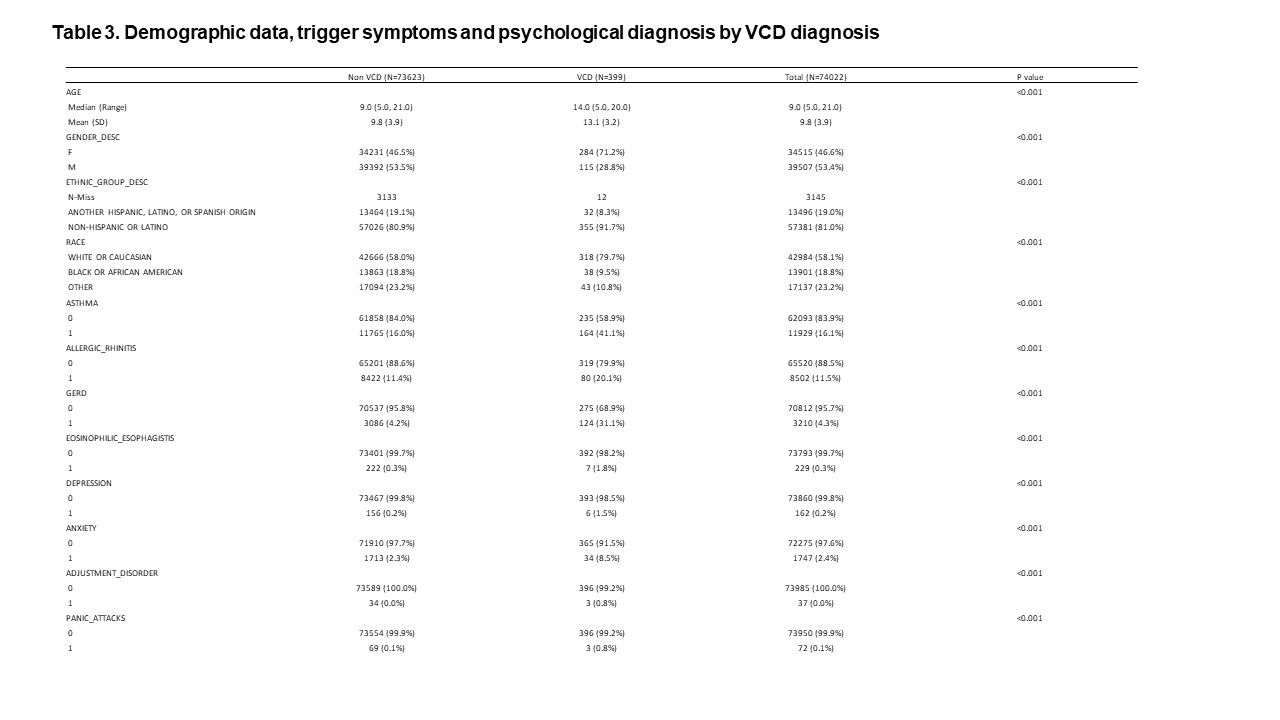Pulmonology
Pulmonology
177 - Psychological Factors Contributing to Vocal Cord Dysfunction in Pediatric Population Pre-Pandemic and During Pandemic
Monday, May 1, 2023
9:30 AM - 11:30 AM ET
Poster Number: 177
Publication Number: 177.449
Publication Number: 177.449
Carolyn Rapp, University of Central Florida College of Medicine, Orlando, FL, United States; Sreekara D. Singam, UCF College of Medicine, Orlando, FL, United States; Zhuo Li, Mayo Clinic, jackvonsonville, FL, United States; Aledie A. Navas Nazario, Nemours Children's Hospital, Orlando, FL, United States
.jpg)
Carolyn Rapp
Medical Student
University of Central Florida College of Medicine
Orlando, Florida, United States
Presenting Author(s)
Background: Vocal Cord Dysfunction (VCD) is a diagnosis that is often overlooked as a differential diagnosis for asthma. Patients present similarly to asthmatics with episodes of acute severe dyspnea, cough, wheeze, and/or chest tightness. Psychological conditions are considered a significant contributor to VCD, as noted in case reports of patients who were victims of sexual abuse, elite athletes, or significant social stressors.COVID-19 has posed a significant impact on mental health, especially in the pediatric population. Case studies have suggested a potential causal link between COVID-19 and VCD in the absence of psychological disorders. A high proportion of US children ≤12 years missed routine pediatric care during the COVID-19 pandemic leading to poor delay diagnosis and treatment of diverse medical conditions including VCD.
Objective: The primary research aim is to investigate if there was an increase in Vocal Cord Dysfunction (VCD) diagnosis in the pediatric population at Nemours Children’s Health (NCH) during pandemic times. The secondary aim is to identify the most common psychological diagnosis associated with VCD diagnosis at NCH.
Design/Methods: A retrospective chart review of data from 2017- 2022 was performed to identify patients at Nemours Children’s Health diagnosed with vocal cord dysfunction seen in the ENT or pulmonary clinics. Data collected using the EPIC software database included demographic data, date of diagnosis of vocal cord dysfunction, diagnostic test used, triggers of VCD, presence of any psychological diagnosis, any history of sexual or substance abuse, and the presence of other associated comorbidities.
Results: There was a statistically significant drop in the incidence rate of VCD from before pandemic to during pandemic time (0.7% vs 0.3%, p< 0.001), and the same trend was observed for most of the psychological diagnosis we included. Among the psychological diagnoses we analyzed, depression, anxiety, adjustment disorder, and panic attack were associated with higher incidence of VCD.
Conclusion(s): Overall, we conclude that in our population the incidence rate of VCD decreased before pandemic to during pandemic times due to decrease in outpatient medical care.. The most common psychological factor associated with VCD was anxiety, bipolar, depression, ADHD and panic attacks.. The VCD population has a higher proportion of females and higher incidence rates of asthma, allergic rhinitis, GERD, and eosinophilic esophagitis which is in agreement with findings in the literature.


.jpg)
